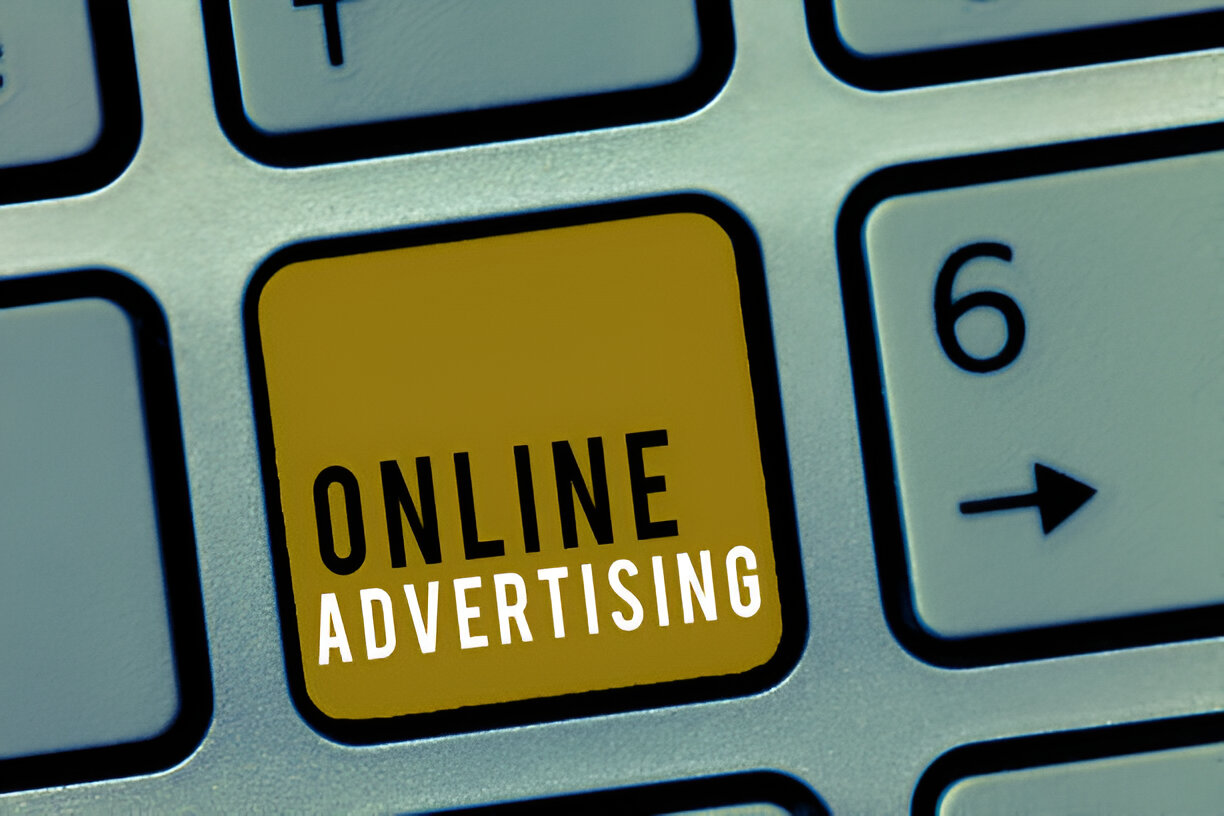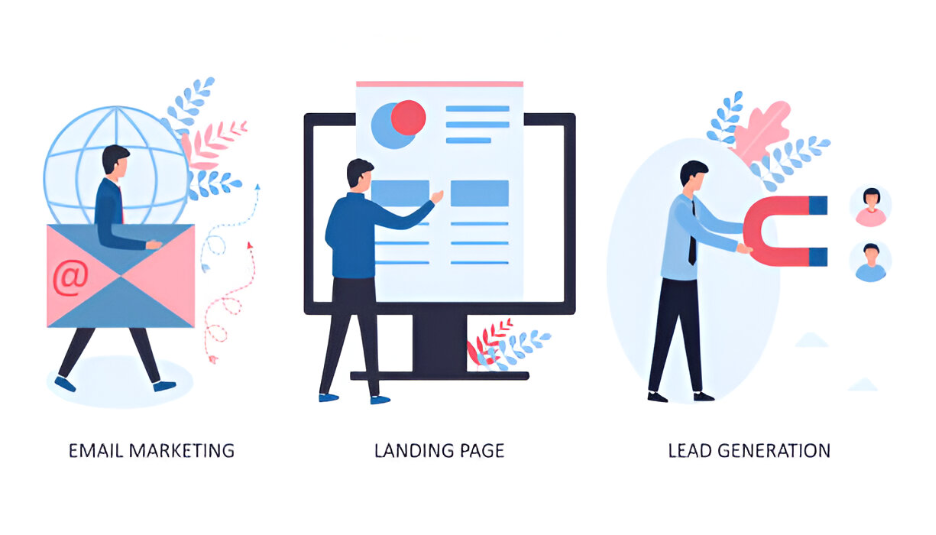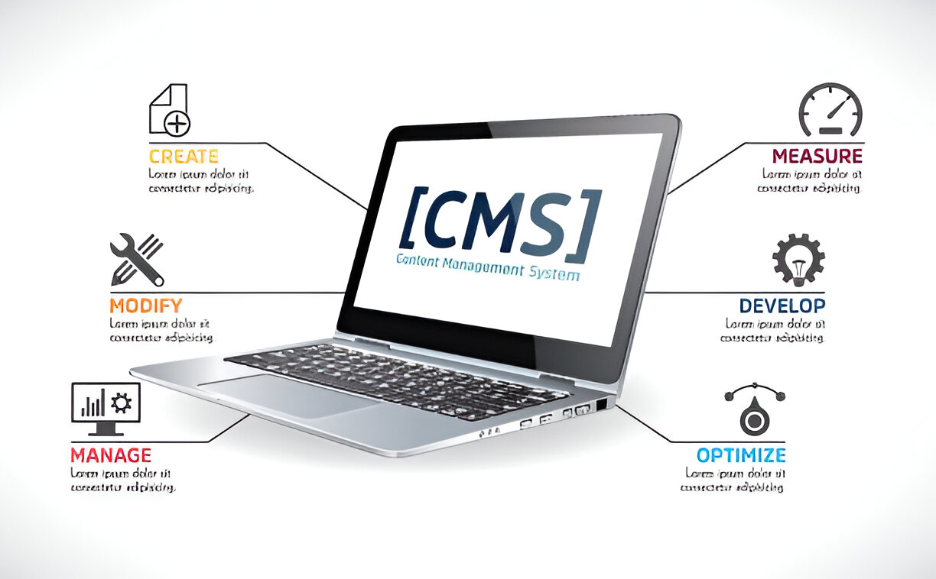Understanding the difference between marketing and advertising is crucial in today’s digital landscape. This blog will explore “Marketing vs Advertising: Everything You Need To Know,” providing a comprehensive look at these essential components of business strategy.
Why Does This Matter?
- Purpose: To differentiate between marketing and advertising, highlighting their roles and significance.
- Relevance: Knowing the difference empowers businesses to craft more effective strategies, addressing digital challenges with precision.
- RISExDigital: As your growth partner, RISExDigital solves digital challenges through PPC, SEO, and custom software solutions. We prioritize trust, innovation, strategy, and execution to deliver high-quality leads and measurable results.
Dive into this guide to gain insights that could transform your approach to both marketing and advertising.
Understanding Marketing
![]()
Marketing is a comprehensive process that encompasses various activities aimed at identifying, anticipating, and satisfying customer needs. It goes beyond mere promotion to include market research, product development, pricing strategies, distribution methods, and more.
What is Marketing?
Marketing involves a broad range of functions designed to create value for both the company and its customers. It’s not just about selling products or services; it’s about understanding the marketplace and delivering solutions that meet customer needs.
Example: RISExDigital leverages its expertise in PPC, SEO, and custom software to offer tailored solutions that align with client objectives.
Why Understanding Customer Needs Matters
A successful marketing campaign hinges on a deep understanding of customer behavior and preferences. Identifying these needs allows businesses to craft messages and offers that resonate with their target audience.
- Customer Research: Conduct surveys, focus groups, and data analysis.
- Personalization: Customize marketing messages to suit individual preferences.
- Feedback Loops: Continuously gather customer feedback for iterative improvements.
How Marketing Builds Long-Term Relationships
Marketing plays a crucial role in developing and maintaining long-term relationships with customers. Consistent branding efforts contribute to building trust and loyalty over time.
- Brand Messaging: Ensure consistency across all channels.
- Engagement Strategies: Utilize social media, email marketing, and content creation to engage with customers.
- Value Delivery: Provide ongoing value through educational content, special offers, and exceptional customer service.
The 4 P’s of Marketing

Understanding the 4 P’s of marketing—Product, Price, Place, and Promotion—is essential for crafting a cohesive strategy that drives results. Each component plays a distinct role in forming an effective marketing plan.
Product
The first “P” focuses on what you are offering to your customers. A product can be a tangible good, service, or even an idea. At RISExDigital, we emphasize the importance of understanding customer needs to tailor our products accordingly. For instance, our custom software solutions are designed after thoroughly researching client requirements and industry trends.
Price
Price is not just about the monetary cost; it also involves perceived value. Setting the right price can influence the customer’s purchase decision and overall satisfaction. RISExDigital uses competitive pricing strategies to ensure our digital solutions offer excellent value without compromising quality. This balance helps attract high-quality leads and encourages customer loyalty.
Place
Place concerns how and where your product is distributed and sold. The goal is to make your product accessible to your target market at the right time and location. For example, RISExDigital employs various online platforms for PPC campaigns, ensuring that our clients’ ads reach potential customers where they are most active.
Promotion
Promotion encompasses all activities that communicate the product’s benefits and persuade customers to purchase it. This includes advertising, public relations, social media, and more. RISExDigital leverages data-driven insights to create personalized promotion strategies that resonate with specific audience segments.
Interrelation of the 4 P’s
The 4 P’s are interconnected elements that form a unified marketing strategy:
- Product dictates the features and benefits.
- Price influences customer perception.
- Place ensures accessibility.
- Promotion drives awareness and demand.
By aligning these components, RISExDigital creates marketing strategies that not only meet but exceed client expectations, driving measurable results and sustainable growth.
Types of Marketing Strategies
Businesses can adopt various marketing strategies to achieve their goals. Some of the most effective strategies include branding, content marketing, and public relations.
Branding
Branding is the process of creating a unique identity for a product or service. It involves developing a strong brand message, logo, and visual elements that distinguish your brand from competitors. Successful branding ensures consistency across all marketing channels, making it easier for customers to recognize and trust your brand.
Content Marketing
Content marketing focuses on creating and distributing valuable, relevant content to attract and engage a target audience. This strategy includes blog posts, videos, infographics, and social media updates. Effective content marketing not only drives traffic but also builds authority and trust with your audience.
Public Relations (PR)
Public relations aim to manage the public perception of a brand by securing positive media coverage and managing communication during crises. PR strategies include press releases, media pitches, and event sponsorships. By maintaining a positive public image, businesses can enhance their credibility and foster long-term relationships with their audience.
Paid, Owned, and Earned Media
Marketing strategies can be categorized into paid, owned, and earned media:
- Paid Media: Includes advertising channels like PPC campaigns and sponsored social media posts. These require financial investment but offer quick results.
- Owned Media: Encompasses assets you control such as your website, blog, and email newsletters. These platforms are ideal for long-term relationship building.
- Earned Media: Refers to organic publicity gained through word-of-mouth or media coverage. This type of media lends credibility but is harder to control.
Understanding these types of marketing strategies helps businesses create a balanced approach that leverages all available resources effectively.
Traditional vs Digital Marketing Methods: A Comparative Analysis

Traditional marketing methods have been the backbone of advertising for decades. These methods include:
- Print Media: Newspapers, magazines, and brochures.
- Television Advertisements: Commercials broadcasted during TV shows.
- Radio Ads: Promotional spots aired on various radio stations.
- Billboards and Posters: Physical advertisements placed in high-traffic areas.
Advantages of traditional marketing:
- Broad reach, especially among older demographics.
- Tangible and often considered more trustworthy by some consumers.
- High visual impact with formats like billboards and TV ads.
Disadvantages of traditional marketing:
- Higher costs associated with production and distribution.
- Limited ability to track precise engagement metrics.
- Less flexibility for quick adjustments or targeting specific audiences.
Digital marketing methods, on the other hand, leverage online platforms. These include:
- Social Media Ads: Paid promotions on platforms like Facebook, Instagram, and LinkedIn.
- Search Engine Optimization (SEO): Increasing organic visibility on search engines like Google.
- Pay-Per-Click (PPC): Online ads where businesses pay per user click.
Advantages of digital marketing:
- Precise targeting options based on demographics, interests, and behaviors.
- Real-time analytics for tracking performance and ROI.
- Cost-effective solutions with scalable budgets suitable for all business sizes.
Disadvantages of digital marketing:
- Potential saturation in certain online spaces leading to ad fatigue among users.
- Requires ongoing optimization and monitoring to maintain effectiveness.
RISExDigital leverages both approaches to deliver comprehensive marketing solutions. For instance, a recent campaign combined television advertisements to build brand awareness with social media ads targeted at specific customer segments. This hybrid strategy ensured broad reach while also driving measurable engagement through digital channels.
By understanding the strengths and limitations of each method, you can create a balanced marketing strategy that maximizes reach and engagement.

Goals and Objectives in Marketing: Building Lasting Relationships with Customers
Marketing aims to achieve several primary goals, chief among them being long-term customer engagement and brand development. The focus is not just on attracting new customers but also on nurturing existing ones to foster loyalty and advocacy.
Long-Term Customer Engagement
Long-term engagement is about creating ongoing interactions with your audience. By consistently providing value, you build a relationship that goes beyond a single transaction. This can be achieved through:
- Content Marketing: Providing valuable information regularly to keep your audience informed and engaged.
- Email Campaigns: Regular updates and personalized offers keep the brand top-of-mind.
- Social Media Interaction: Active participation in conversations with your audience fosters a community feeling.
Brand Development
Brand development is another critical goal. It involves shaping how your brand is perceived in the marketplace. This requires a focus on:
- Consistency: Uniform messaging across all channels helps in building a recognizable brand.
- Quality: High-quality products or services coupled with excellent customer service reinforce positive perceptions.
- Innovation: Continually updating your offerings to meet evolving customer needs keeps your brand relevant.
Importance of Building Lasting Relationships
Building lasting relationships hinges on consistent messaging and value delivery. Consistency ensures that customers know what to expect from your brand, fostering trust.
Value Delivery involves meeting or exceeding customer expectations through:
- Product Quality: Ensuring that your product or service delivers as promised.
- Customer Support: Providing timely and effective support to resolve issues enhances customer satisfaction.
- Personalization: Tailoring experiences based on individual customer preferences shows that you value their uniqueness.
Examples from RISExDigital
RISExDigital excels in these areas by implementing strategies that emphasize both long-term engagement and brand development. Through personalized client experiences, they ensure each interaction adds value, thereby fostering lasting relationships.
Understanding Advertising: The Role of Paid Promotions in Driving Short-Term Results
Advertising is a specific subset within the broader marketing spectrum, focusing primarily on paid promotions to achieve quick, measurable outcomes. Unlike marketing, which aims for long-term brand development and customer engagement, advertising zeroes in on immediate goals such as brand awareness and lead generation.
Key Focus Areas of Advertising
- Paid Promotions: Advertising relies heavily on paid channels to disseminate messages quickly and widely. This includes traditional mediums like TV commercials and print ads, as well as digital platforms like Google Ads and social media promotions.
- Quick Outcomes: The primary objective of advertising is to generate rapid results. Whether it’s driving traffic to a website or increasing sales during a promotional period, advertising campaigns are designed for short-term impact.
Significance in Marketing vs Advertising
- Brand Awareness: One of the most significant roles of advertising is creating brand awareness in a short time frame. For instance, launching a new product often requires an aggressive advertising campaign to make potential customers aware of its existence quickly.
- Lead Generation: Paid promotions are also essential for lead generation efforts. Through targeted advertisements, businesses can attract new customers who may eventually convert into loyal clients.
- Specific Campaign Goals: Unlike broader marketing strategies aimed at long-term growth, advertising campaigns typically have specific goals such as increasing event attendance or boosting holiday sales.
Examples from RISExDigital
RISExDigital uses a mix of traditional and digital advertising methods to get these fast results. By using data-driven insights, they create ad campaigns that not only increase brand visibility but also bring in high-quality leads. Their strategic use of paid promotions ensures that clients see measurable results swiftly, aligning with their core values of execution and measurable success.
Understanding the role of advertising within the marketing ecosystem allows businesses to harness its power effectively for short-term gains while complementing broader marketing objectives.
Types of Advertising Channels: Choosing the Right Medium for Your Target Audience
Advertising channels have evolved significantly, offering businesses a variety of options to reach their target audience. The selection of these channels depends largely on the demographics and preferences of the intended audience.
Traditional Advertising
Traditional advertising methods have been around for decades and include:
- Billboards: Ideal for high-traffic areas, billboards capture the attention of commuters and pedestrians. They’re best suited for broad messages aimed at mass audiences.
- Television and Radio Ads: These mediums offer wide reach and are effective in creating brand awareness. TV ads provide visual appeal, while radio ads rely on auditory impact.
- Print Media: Newspapers, magazines, and brochures are traditional print channels that cater to specific readerships. Print media is often used for detailed information and targeted messaging.
Digital Advertising
Digital advertising has revolutionized how businesses connect with potential customers:
- Social Media Ads: Platforms like Facebook, Instagram, and Twitter allow highly targeted ad campaigns based on user data such as age, interests, and behavior.
- Search Engine Marketing (SEM): Google Ads is a popular example where businesses bid on keywords to appear in search results. This method targets users actively seeking information related to your products or services.
- Display Ads: Banner ads placed on websites attract users’ attention through visuals and interactive content. They can be targeted based on user browsing history and demographics.
- Email Marketing: Personalized email campaigns engage subscribers with tailored messages, promotions, and updates.
Understanding Your Target Audience
Choosing the right advertising medium involves understanding your target audience:
- Age Group: Younger audiences might be more engaged through social media platforms, while older demographics may rely more on traditional media like TV or print.
- Geographic Location: Local businesses might benefit from billboards or local newspaper ads, whereas global companies could leverage digital channels for wider reach.
- Interests and Behaviors: Social media platforms provide detailed analytics on user interests and behaviors, enabling precise targeting.
By carefully selecting the appropriate advertising channels based on these factors, businesses can optimize their campaigns for maximum impact.
Objectives Behind Advertising Campaigns: Balancing Brand Awareness with Lead Generation Goals

Advertising campaigns are designed with specific objectives in mind, primarily focused on two key goals: increasing brand awareness and generating leads.
Increasing Brand Awareness
Raising brand visibility is crucial for any business looking to establish a strong market presence. Effective advertising campaigns achieve this by:
- Creating memorable content that resonates with the target audience.
- Utilizing diverse advertising channels, such as social media, TV, and print, to reach a broader audience.
- Employing consistent messaging across all platforms to reinforce brand identity.
For instance, RISExDigital leverages eye-catching visuals and compelling narratives in their ad campaigns to ensure that their clients’ brands remain top-of-mind among potential customers.
Attracting New Customers
Lead generation is another critical objective of advertising campaigns. By targeting specific demographics and utilizing data-driven strategies, businesses can convert prospects into customers. Key tactics include:
- Targeted ad placements based on user behavior and preferences.
- Offering incentives or promotions to encourage immediate action from potential customers.
- Crafting persuasive calls-to-action (CTAs) that drive engagement and conversions.
RISExDigital excels at creating tailored PPC (Pay-Per-Click) campaigns that not only attract new customers but also deliver measurable results through precise targeting and strategic ad spend management.
Informing Existing Customers About New Offerings
Keeping existing customers informed about new products or services is essential for maintaining their loyalty and encouraging repeat business. Targeted ad messaging plays a vital role here by:
- Highlighting new product launches or service updates.
- Sharing exclusive offers or discounts specifically for loyal customers.
- Using personalized communication channels, such as email marketing or retargeting ads, to provide relevant information directly to existing clientele.
By focusing on these objectives, RISExDigital helps businesses maximize their advertising efforts, ensuring a balanced approach that bolsters both brand awareness and lead generation.
Performance Tracking in Advertising: Measuring Success Beyond Clicks and Impressions
Metrics to Measure Advertising Effectiveness
Understanding the effectiveness of your advertising campaigns requires more than just surface-level indicators. Two critical metrics are:
- Click-Through Rates (CTR): This measures the percentage of people who click on your ad after seeing it. A high CTR indicates that your ad is resonating well with your audience.
- Return on Ad Spend (ROAS): This metric calculates the revenue generated for every dollar spent on advertising. A higher ROAS signifies a more profitable campaign.
Importance of Data Analysis
Analyzing these metrics is essential for refining future campaigns. Data analysis helps you identify:
- Audience Behavior: Understanding how different segments of your audience interact with your ads can help tailor future initiatives.
- Campaign Performance: By examining CTR and ROAS, you can pinpoint which elements of your campaign are most effective.
- Budget Allocation: Efficiently allocate your budget towards high-performing ads, maximizing your return.
RISExDigital emphasizes data-driven strategies to ensure optimal results for clients, leveraging comprehensive analytics to refine and enhance advertising efforts continually.
“Measuring success in advertising goes beyond clicks and impressions; it’s about understanding the complete customer journey.”
Ensuring accurate performance tracking and data analysis will lead to better-informed decisions, resulting in campaigns that not only meet but exceed business objectives.
You’ll need to consider how these insights can be applied in choosing the right advertising channels and crafting messages that resonate deeply with your target audience.
Key Differences Between Marketing and Advertising
To help you understand the strategic focus and scope of marketing versus advertising, here’s a comprehensive comparison table:
| Aspect Marketing Advertising Definition | Comprehensive strategy to identify and meet customer needs. | Paid promotions to drive short-term results. |
| Scope | Encompasses market research, branding, content creation, and strategic planning. | Focuses on specific media buys and ad placements. |
| Objective | Long-term brand development and customer engagement. | Immediate brand awareness and lead generation. |
| Approach | Holistic, involving multiple tactics and channels. | Targeted, often through specific campaigns or messages. |
| Metrics | Customer lifetime value, brand equity, market share. | Click-through rates (CTR), return on ad spend (ROAS). |
| Duration | Ongoing efforts for continuous growth and relationship building. | Short-term campaigns aiming for quick outcomes. |
Understanding these differences helps in effectively leveraging both marketing and advertising strategies for optimal results in your business endeavors.
How Marketing and Advertising Work Together for Success
Marketing and advertising are two important parts of a business strategy, each playing a crucial role in achieving business success through integrated strategies. While marketing encompasses a broad range of activities aimed at understanding and meeting customer needs, advertising focuses on paid promotions to drive immediate results.
Key aspects of their interconnection:
- Complementary Roles: Marketing strategies build brand reputation over time, while advertising campaigns create short-term spikes in visibility.
- Consistent Messaging: A unified approach ensures that the messaging across both marketing and advertising channels is aligned, reinforcing brand identity.
- Cross-functional Teams: Collaboration between marketing and advertising teams enables better-targeted campaigns, leveraging market research insights for more effective ad placements.
RISExDigital excels in blending these elements to deliver cohesive and results-driven digital solutions. By harmonizing long-term marketing efforts with targeted advertising, businesses can unlock substantial growth and sustained customer engagement.
Conclusion
Understanding the differences and similarities between marketing and advertising is essential for any business looking to succeed in today’s competitive world. Marketing involves a broad strategy focused on long-term goals like building a brand and engaging customers. Advertising, on the other hand, focuses on short-term objectives using paid promotions to achieve quick results.
By combining both disciplines, businesses can create comprehensive strategies that lead to sustained growth and measurable success. Whether you need high-quality leads or scalable solutions, RISExDigital offers personalized, data-driven digital solutions tailored to your needs.
Key Takeaways:
- Marketing: Focuses on long-term brand building and customer relationships.
- Advertising: Aims for quick wins through targeted paid promotions.
- Integration: Combining both ensures balanced growth and effective outreach.
For those seeking expertise in navigating the complexities of marketing vs advertising, RISExDigital stands as a trusted partner committed to delivering transparent, innovative, and strategic solutions.
Contact us via email or follow us on social media for more insights.
FAQs (Frequently Asked Questions)
Marketing is a comprehensive process that involves understanding customer needs, brand development, and long-term engagement. Advertising, on the other hand, focuses on paid promotions aimed at achieving quick outcomes like brand awareness and lead generation.
The 4 P’s of Marketing include Product, Price, Place, and Promotion. Each component interrelates to form a cohesive marketing strategy that drives results. For example, RISExDigital employs these principles to ensure effective marketing campaigns.
Businesses can adopt various marketing strategies such as branding, content marketing, and public relations. It’s essential to differentiate between paid, owned, and earned media within these strategies to maximize effectiveness.
Traditional marketing methods, like print media and television advertisements, offer distinct advantages such as broad reach. In contrast, digital marketing methods provide measurable results and targeted engagement. RISExDigital illustrates the effectiveness of both approaches through case studies.
The primary goals of marketing include building long-term customer engagement and developing a strong brand presence. Consistent messaging and delivering value are crucial for fostering lasting relationships with customers.
Businesses can measure the effectiveness of advertising through metrics like click-through rates (CTR) and return on ad spend (ROAS). Data analysis plays a vital role in refining future campaigns for better results.





